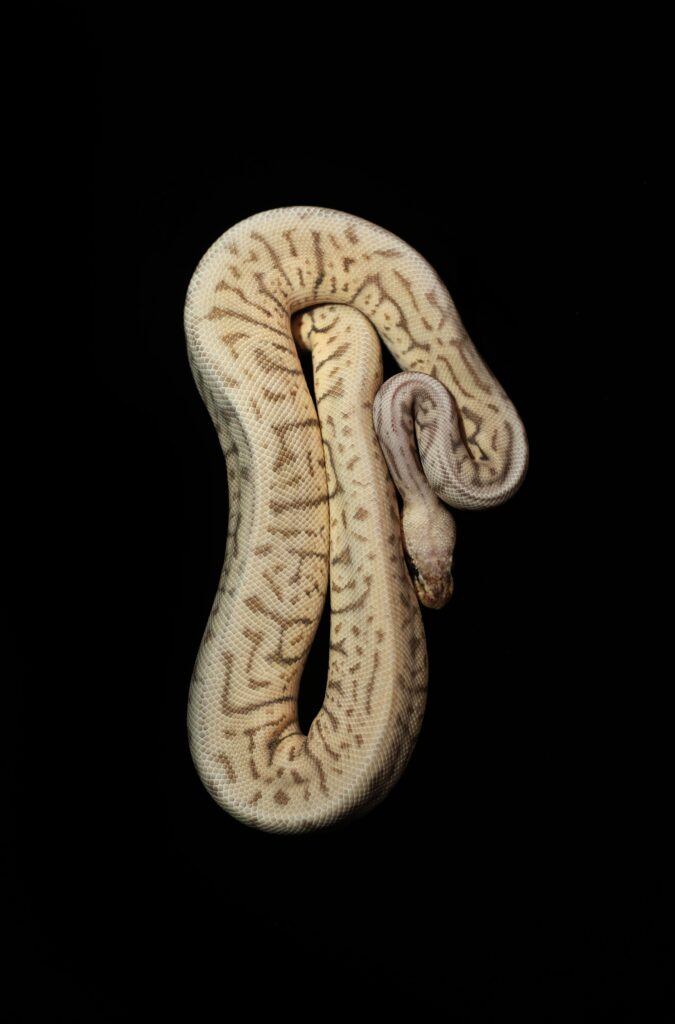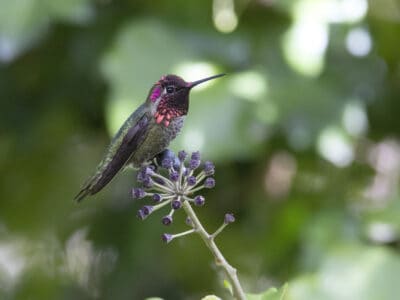Super Pastel Ball Python
Python regius
Advertisement
Super Pastel Ball Python Scientific Classification
- Kingdom
- Animalia
- Phylum
- Chordata
- Class
- Reptilia
- Order
- Squamata
- Family
- Pythonidae
- Genus
- Python
- Scientific Name
- Python regius
Read our Complete Guide to Classification of Animals.
Super Pastel Ball Python Conservation Status
Super Pastel Ball Python Facts
- Prey
- Small rodents and birds
- Main Prey
- Rats and mice
- Group Behavior
- Solitary
- Distinctive Feature
- Bright yellow markings, pale spot on head, blushing throughout patterning
View all of the Super Pastel Ball Python images!
Super Pastel Ball Python Summary
“The super pastel morph is the homozygous or ‘super’ form of the pastel morph. It is created by breeding two pastel ball pythons together, resulting in a stunningly bold, brightly-colored snake.”
Characterized by its ultra-bold, clean, warm brown and tan base coloration and extremely bright yellow patterning, the super pastel ball python morph is one of the first true designer morphs ever produced. Originally developed in 1999 by the breeders at New England Reptile Distributors, NERD, it is the result of breeding two pastel ball pythons together.
In addition to its striking sunny coloration and patterning, faded markings around the head are very common. Lots of blushing is also typical throughout the snake’s head and body, which can cause some of its brown patches to have a greyish, almost pale purple tone.
3 Amazing Super Pastel Ball Python Facts
- As a designer morph, the super pastel cannot occur naturally in the wild. Two pastel ball pythons must be bred together to create super pastel offspring.
- The super pastel was one of the very first designer morphs to enter the exotic pet trade back in 1999!
- The super pastel ball python’s head color and patterning are typically extremely faded compared to the rest of its body.
Where to Find Super Pastel Ball Pythons
The standard, wild-type ball python is native to Sub-Saharan Africa, primarily in western and central Africa. It is incredibly hardy despite its small size and can thrive in various habitats. However, it prefers living in grasslands, savannas, and forests.
Ball pythons first became popular in the exotic pet trade in the early-to-mid 1990s. At the time, very few morphs existed, with most being very subtle base morphs. Thanks to careful, repeated selective breeding practices, reptile breeders have managed to produce thousands of unique morphs since, with the pastel morph being one of the earliest varieties. The super pastel morph quickly followed in 1999 and made history as one of the first true designer morphs ever created.
Originally, the super pastel morph was quite rare and expensive, as very few breeders produced and sold them. Today, you can find and purchase super pastel ball pythons from a wide range of reputable breeders, most of which have online shops where they can ship animals directly to the customer’s home.
On average, you can expect to pay around $100 to $300 for a single snake of this particular morph. This can vary depending on the breeder you’re purchasing the snake from, the morph’s current supply and demand, and the snake’s exact color and patterning.
Super Pastel Ball Python Scientific Name
The ball python’s scientific name is Python regius. This translates to “royal python.” Its name is a reference to the common belief that Queen Cleopatra and other Egyptian royals wore live ball pythons around their wrists as jewelry to flaunt their status and wealth.
Because all ball python morphs belong to the same species, they all share the same scientific name.
Super Pastel Ball Python Population & Conservation Status
According to the IUCN Red List, the ball python has been classified as near-threatened since 2012. Although it isn’t currently at risk of becoming endangered, this may change in the future.
Notably, the ball python’s populations within its native range have been slightly decreasing in recent years. This is mainly due to habitat loss caused by the agricultural industry and the common practice of hunting, trapping, and selling these animals.
It is unknown exactly how many ball pythons currently exist in the wild or captivity.
Super Pastel Ball Python Evolution and History
The super pastel morph was developed in 1999 by New England Reptile Distributors, which is owned by reptile breeder Kevin McCurley. NERD is based in Plaistow, New Hampshire. The super pastel was one of the very first designer morphs ever created.
As its name suggests, it is the “super” or homozygous form of the pastel morph. This means two pastel ball pythons must be bred together to produce super pastel offspring because the pastel traits are “incomplete dominant.” Interestingly, the base pastel morph was also developed by NERD in 1994.
Today, various breeders worldwide have their lines of super pastels. It is now a fairly inexpensive and accessible morph. The super pastel has even been used in the development of various other designer morphs, such as the super pastel pied, super pastel puzzle, and super pastel pinstripe varieties.
How to Identify Super Pastel Ball Python: Appearance and Description

The super pastel ball python’s head color and patterning are typically extremely faded compared to the rest of its body.
©Pavaphon Supanantananont/Shutterstock.com
The super pastel ball python can be identified primarily by its clean, bold patterning, with a light to dark brown base color accented by extremely vivid yellow markings. Yellow markings can vary from a warm, sunny yellow to a paler, almost off-white tone.
Also commonly present is extensive blushing throughout the head and body and especially faded markings around the head. This distinct blushing is usually not very prominent in hatchlings but becomes more visible with age. The patterning on the snake’s belly is often significantly blurry because of this blushing.
Super pastel snakes typically have a pale, off-white spot or blotch atop their heads stretching from the tip of the nose to the base of the neck. Again, this spot is small and often difficult to spot while the snake is a hatchling, but it becomes more prominent with age.
Keep these traits in mind when identifying a super pastel ball python:
- Bold, clean patterning with very bright yellow markings
- Lots of blushing throughout the body
- Pale, off-white spot on top of the head
- Little to no dorsal (belly) patterning or markings
Super Pastel Ball Python: How Dangerous Are They?
Like all members of the Python family, the ball python is a non-venomous constrictor snake. It is one of the smallest python species at just 3 to 5 feet long on average. It primarily hunts small rodents and birds and is not aggressive toward humans. Lacking fangs, it has small teeth and weak yet flexible jaws.
The ball python gets its common name from its tendency to defensively curl its body into a tight ball when startled or threatened. Rather than attacking, it will simply flee or adopt this defensive position until it feels safe enough to escape.
All ball python morphs belong to the same species, so they share the same general temperament. Thanks to this docile, hardy, and curious nature, this unique snake has become extremely popular in the exotic pet trade. Over the years, it has even gained a reputation as one of the gentlest, tamest pet reptiles, ideal even for younger, beginner reptile hobbyists.
If a ball python bites you, first ensure the snake has no injury and carefully place it back into its enclosure. Next, clean the wound with warm water and a gentle soap. Bandaging the wound can help to prevent infection and speed up the overall healing process. The vast majority of ball python bites are minor and require very little medical intervention.
Super Pastel Ball Python Behavior and Humans
Starting in the 1990s, the ball python has quickly become one of the world’s most popular and abundant pet reptiles. It has since developed a long and close relationship with humans. Its behavior tends to be slightly timid yet docile, gentle, and intelligent. Thanks to its simple care requirements and small size, it keeps and breeds extremely well in captivity.
It is estimated that more than 4,000 unique morphs exist today, with more being developed all the time.
The super pastel morph has existed since 1999 and remains one of the more popular designer morphs on the market. As a designer morph, it cannot occur naturally in the wild and requires specific conditions (breeding two pastel morph snakes together) to produce them in captivity.
Related Animals
View all 293 animals that start with SSuper Pastel Ball Python FAQs (Frequently Asked Questions)
Are super pastel ball pythons venomous?
Ball pythons are non-venomous constrictor snakes. They are not considered dangerous to humans.
How do super pastel ball pythons hunt?
Ball pythons are ambush hunters. They lie in wait for a prey animal (typically a small rodent or bird) to cross their path before striking. After latching onto the prey with their small yet sharp teeth, the snake will rapidly and tightly coil its body around the animal to suffocate it.
Once the prey animal dies, the ball python will swallow it whole and digest it slowly over the course of several days. In captivity, reptile owners typically feed their ball pythons captive-bred rats and mice.
Are super pastel ball pythons aggressive?
Ball pythons are not aggressive–in fact, they tend to be quite shy and timid. They are among the tamest and most docile pet reptiles in the world. Since all ball python morphs belong to the same species, they all have the same general temperament.
Thank you for reading! Have some feedback for us? Contact the AZ Animals editorial team.
Sources
- IUCN Red List, Available here: https://www.iucnredlist.org/species/177562/15340592
- Morph Market, Available here: https://www.morphmarket.com/stores/nerd/
- NW Reptiles, Available here: https://www.nwreptiles.com/super-pastel/
- Oakland Zoo, Available here: https://www.oaklandzoo.org/animals/ball-royal-python
- San Diego Zoo, Available here: https://animals.sandiegozoo.org/animals/python
- World of Ball Pythons, Available here: https://www.worldofballpythons.com/morphs/super-pastel/

















